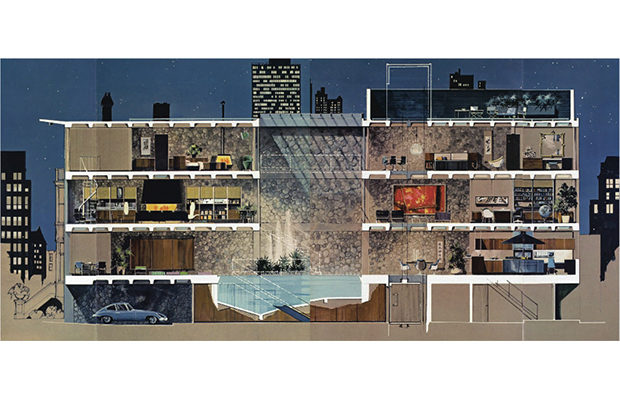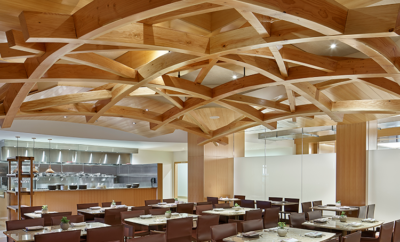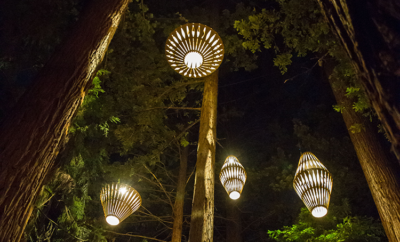 Photos courtesy of Elmhurst Art Museum elmhurstartmuseum.org
Photos courtesy of Elmhurst Art Museum elmhurstartmuseum.org
Exhibition
AT HOME IN THE PAGES OF PLAYBOY
SEX SELLS. And modernism sold sex. Or, at least from its founding in 1953 to the end of the 1970s, Playboy magazine promoted modern architecture and design as the ideal environment in which to perfect the art of seduction. An exhibition on view at the Elmhurst Art Museum in Illinois until August 28 explores this theme with photographs, films, architectural models, and more, illustrating the dream apartments with their seductive chairs, round beds, futuristic lamps, and sophisticated hi-fi equipment that were intended to shape a new sexual and consumer identity for the American male.
Based in Chicago, Playboy championed such innovative Chicago architects as Ludwig Mies van der Rohe and Frank Lloyd Wright, and, indeed, says the architectural historian and the show’s lead curator, Beatriz Colomina, “Playboy could not exist without architecture. But architecture is not just the setting for sex. From the very first issues, there were features on Wright and Mies van der Rohe up to the most radical architects of the 1960s and ‘70s, like Ant Farm, Chrysalis, John E. Lautner, Charles Willard Moore, and Moshe Safdie. With its massive readership—at its peak in 1972, seven million copies were sold—the magazine did more to promote architecture than institutions like the Museum of Modern Art in New York or any professional architectural publication.”

To help complete the perfect “bachelor pad,” there were interviews with designers such as Saarinen, Eames, Nelson, Colombo, and Superstudio, as well as guides on what to buy to furnish it—not to mention what to wear, what to drink, what to read, what car to drive, what music to listen to. As Colomina observes, “Playboy was more than an education, it was a whole lifestyle.” The exhibition, entitled Playboy Architecture: 1953–1979, is fittingly installed in the Elmhurst Art Museum’s Mies van der Rohe–designed McCormick House (1952).












